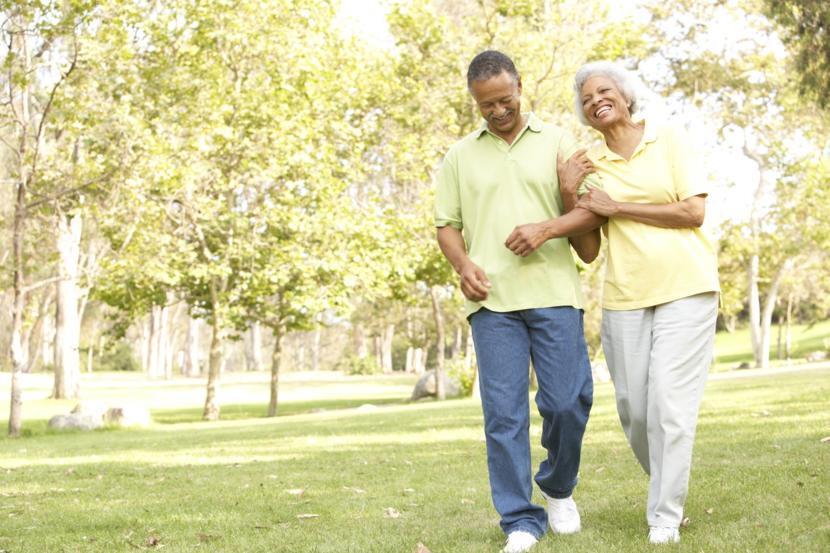The Impact of Light Therapy on Parkinson's Disease

In addition to tremors, speech, and balance problems, an estimated 90 percent of Parkinson’s patients also have trouble with their sleep rhythms. Although going to sleep is sometimes not usually an issue in itself, having a continued night of rest without waking and continuous nightmares is a bigger struggle. The reasons for a fitful sleep include involuntary jerky movements and other problems such as frequent bathroom breaks which usually accompany aging, but it is found more so in Parkinson’s patients due to their symptoms.
The reason why Parkinson’s disease takes such a heavy toll on restful sleep is not fully known, but the body’s reaction to its loss of dopamine and the subsequent medications to reverse the effect seem to be a possible problem. When Parkinson’s patients have reported involuntary movements that hinder their sleep as a result of their disease, doctors have sometimes responded by increasing their medicine. The problem with this solution, however is that the medicine has been linked to terrible nightmares which also keep patients up at night.
This has led scientists to try and understand what they actually can do for some patients who are experiencing these issues. While Parkinson's patients are experiencing dyskinesia because of the side effect from L-dopa, they want to try and counter this issue with less medication than what is already needed. But, what could they possibly do?
Light therapy has been found to be helpful before with numerous other diseases that have sleeping issues accompanying them, such as sleep apnea. With this in mind, scientists wanted to see what would happen if they put it to use on one of the most common neurological disorders across the world: Parkinson's disease.
Light therapy: What it is and how it works with the circadian rhythm
To counter the problem without more medicine, Northwestern and Rush Universities developed a certain type of light therapy to correct sleeping patterns within patients. Everyone’s sleep patterns are governed by the circadian rhythm. The circadian rhythm uses information about daylight to stimulate sleepiness or wakefulness; by registering light, it helps the body realize the time of day and get enough sleep accordingly. This is also one of the reasons recent studies have been made about the lights coming from the electronics of the present day and how they may be interrupting sleep. This mainly happens with patients using their phones right before they go to sleep. While light is not the only element guiding circadian rhythm, it is definitely the most influential. The Regents of the University of California, the Parkinson’s Disease Clinic and Research Center, acknowledge the role and process of light concerning circadian rhythm in their article on sleep and Parkinson’s disease: “The sleep-wake cycle is one of the most obvious of our body’s circadian rhythms…This clock can be influenced by a variety of internal and external parameters, including aging, time-zone shifts, exercise, melatonin, and the light-dark cycle. The light-dark cycle is the strongest external parameter affecting this clock” (Regents of the University of California).
While the circadian rhythm, and consequently sleep, naturally becomes more interrupted as people age, this is heightened to an unusual degree in Parkinson’s patients because of the disease's symptoms regarding movement. As age obviously cannot be reversed, researchers at Northwestern and Rush Universities decided to use light to influence patient’s circadian rhythms. Furthermore, research thus far gives evidence that it is working.
Bright light therapy is already a known treatment for illnesses like depression, particularly in countries like Norway when natural daylight is limited and winter depression is rampant. Several studies have also concluded that it helps the mobility in Parkinson’s patients, and may even slow the death of cells in Alzheimer’s patients, “Several recent studies in animal models of Alzheimer's and Parkinson's disease have reported that low-level near infrared light (NIr) therapy not only mitigates the behavioral deficits associated with these conditions but also has neuroprotective effects, slowing the underlying death of neurons. Current clinical therapies for both diseases do not achieve a comparable slowing of degeneration and neuroprotection, though they do relieve motor signs in Parkinson's disease and, to a lesser extent, the cognitive, and memory deficits in Alzheimer's disease” (Johnstone).
All of these benefits relate to Parkinson’s patients as they are also known to suffer from depression, brain cell damage, and sleep problems. As an added bonus, it isn’t even an expensive investment: A 10,000 LUX light goes on Amazon for around $80. Even so, a sunny day outside provides the same advantages for free. So, it would definitely help patients if they have a little more sun added to their room or if they would go on a walk with a caregiver, not only to get some sunlight, but also some air to aid them in sleep.
In the article “Sleep and Parkinson’s Disease” on the Parkinson’s Disease Clinic and Research Center website, several recommendations for better sleep are listed. Some of the ideas for a good night's rest include: a relaxing bedtime routine, and limiting naps, caffeine, and exercise for several hours before bed. It is also suggested to try and reduce stressful topics, this could be done by even going to therapies or a support group.
If a patient also has trouble sleeping, they should do a small activity like listening to music, but nothing that requires a bright light, like reading in the dark or watching TV.
Another important therapy for Parkinson’s and other problems concerning the circadian rhythm is exercise. Going on a sunny morning walk serves as a double-dose of benefits by strengthening muscles and absorbing sunlight for a restful night’s sleep.
Sources
Johnstone, Daniel M. et al. “Turning On Lights to Stop Neurodegeneration: The Potential of Near Infrared Light Therapy in Alzheimer’s and Parkinson’s Disease.” Frontiers in Neuroscience 9 (2015): 500. PMC. Web. 20 Nov. 2017.
Martin, Jay. “To Go to Sleep, Parkinson's Patients May Need to Turn the Light On.” Medical News Bulletin, 16 Mar. 2017, www.medicalnewsbulletin.com/to-go-sleep-parkinsons-patients-may-need-turn-light/
Moon, Mary Ann. “Light Therapy Eases Parkinson's-Related Sleep Disturbances.” Clinical Neurology News, 22 May 2017, www.mdedge.com/clinicalneurologynews/article/131767/parkinsons-disease/light-therapy-eases-parkinsons-related-sleep.
The Regents of the University of California. “Sleep and Parkinson's Disease.” Parkinson's Disease Clinic and Research Center, 2014, http://pdcenter.neurology.ucsf.edu/patients-guide/sleep-and-parkinsons-disease.















